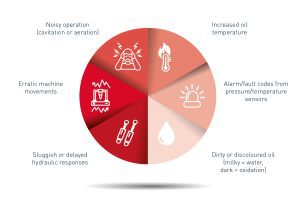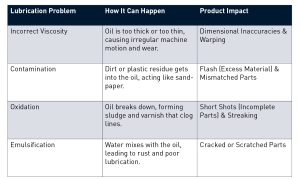Advanced oils, lubricants and treatments since 1887
Main Switchboard: +44 (0)1484 713201
Technical Help Desk: +44 (0)1484 475060
Advanced oils, lubricants and treatments since 1887
Main Switchboard: +44 (0)1484 713201
Technical Help Desk: +44 (0)1484 475060
When it comes to hydraulic systems, oil isn’t just a lubricant —it is a vital component to the system, however, oil cleanliness is often overlooked until damage has already occurred. The reality is that over 80% of hydraulic component failures stem from contamination in the oil. That’s not just a statistic—it’s a wake-up call to look at preventative maintenance.
The Original Equipment Manufacturers (OEM’s) don’t leave oil cleanliness to chance. They specify an ISO cleanliness code, which sets strict limits on the number of particles allowed in hydraulic oil at 4, 6, and 14 microns. These microscopic invaders—smaller than a grain of pollen—can wreak havoc on precision machinery if left unchecked.
Clean hydraulic oil isn’t just about avoiding breakdowns—it’s about unlocking peak performance. Here’s what you gain:

Contaminated or degraded oil doesn’t just affect performance—it leaves a trail of clues. Here’s how lubrication problems manifest:

Oil cleanliness isn’t just a maintenance checklist item—it’s a strategic advantage. By investing in proper filtration, regular monitoring, and adherence to ISO codes, manufacturers and operators can dramatically reduce downtime, extend equipment life, and protect their bottom line.
So next time you check your hydraulic system, ask yourself: Is my oil clean enough to protect what matters most?
Contact us to speak with our team or find out about out preventative maintenance with Millers Oils Fluid Management Division.
More about Millers Oils